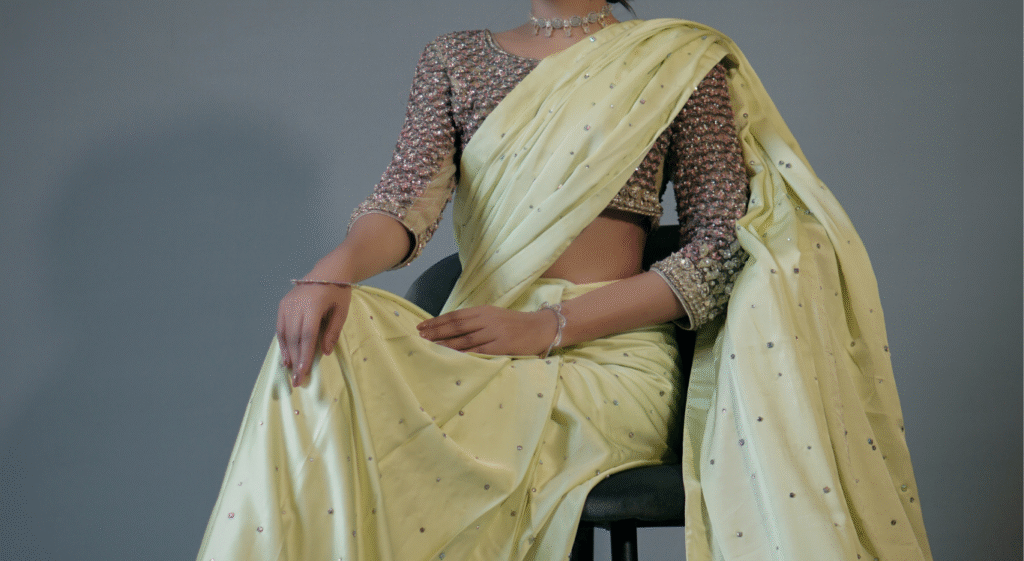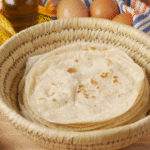The set saree is one of the most elegant and traditional drapes of Kerala. Known for its timeless charm, it is usually woven in soft cotton or silk with a classic off-white or cream base and decorated with a golden zari border, popularly called kasavu. Unlike brightly colored sarees, the set saree reflects simplicity, grace, and cultural heritage. Women usually wear it during festivals, weddings, and important functions in Kerala, especially during Onam and Vishu.
The word “set” in set saree comes from the traditional “Mundu Neriyathu,” a two-piece garment worn in Kerala. Over time, this two-piece attire evolved into a single-piece saree, which is now widely known as the Kerala set saree. It beautifully combines cultural values with modern dressing style.
This saree has become more than just an outfit—it represents tradition and identity. With increasing demand, designers have also added creative touches like thread work, colored borders, and printed patterns to make it appealing to younger generations. Still, the golden kasavu border remains the highlight of every authentic set saree.
History and Cultural Significance of Set Saree
The origins of the set saree can be traced back to Kerala’s long tradition of handloom weaving. The attire was inspired by the “Mundu,” a simple white cloth wrapped around the waist, and the “Neriyathu,” which was draped over the shoulder. When combined, this two-piece dress became a symbol of modesty and elegance. Eventually, it evolved into the single-piece Kerala set saree that we see today.
The golden border, called kasavu, is made with real gold-coated thread in traditional sarees. Historically, wearing kasavu was a sign of wealth and status, as it was woven by skilled artisans. During festivals like Onam, women across Kerala still wear the set saree as a mark of respect for culture and traditions.
The saree also holds a special place in weddings. Brides in Kerala often choose kasavu sarees for their wedding ceremonies, pairing them with heavy jewelry. The blend of white and gold is believed to symbolize purity and prosperity. Even today, the set saree remains an integral part of Kerala’s identity, celebrated for its cultural depth and timeless elegance.
Features and Variations of Set Saree
The set saree is easily recognizable by its cream or off-white body and golden border. Traditionally, these sarees are made from cotton, making them perfect for the humid climate of Kerala. However, in modern times, silk set sarees have also become popular, especially for weddings and festive occasions.
One of the main features of the saree is its border design. While the golden kasavu border is most common, variations include silver borders, colored zari, and even embellished patterns with peacocks, flowers, or temple motifs. The pallu, or end part of the saree, is often adorned with intricate designs, making it stand out beautifully.
Designers have also introduced newer versions of set sarees, blending them with contemporary trends. You can now find set sarees with embroidered blouses, printed pallus, or lightweight fabrics suitable for casual wear. Despite these modern adaptations, the saree continues to preserve its traditional charm.
The versatility of the set saree is another reason for its popularity. It can be styled in multiple ways, with heavy jewelry for weddings or minimal accessories for everyday wear. This balance between tradition and modernity makes the set saree timeless.
Styling and Modern Appeal of Set Saree
Even though the set saree is rooted in tradition, its styling options have made it attractive to women of all ages. Younger women often pair it with trendy blouses in contrasting colors, embroidered designs, or even sleeveless patterns. The golden kasavu border allows the saree to be styled with both gold and silver jewelry, giving flexibility in choosing accessories.
For festivals, women usually wear traditional jewelry such as long necklaces, jhumkas, and bangles, which enhance the richness of the saree. In contrast, for office parties or casual gatherings, a simple blouse and light ornaments can make the saree look elegant without being heavy.
Another popular trend is mixing the set saree with fusion fashion. Many women experiment by wearing it with designer belts, crop tops as blouses, or even Indo-western accessories. Celebrities and fashion designers have also showcased set sarees on runways, giving them a modern touch while keeping their ethnic charm intact.
The comfort of cotton set sarees also makes them suitable for daily wear in hot weather. Whether traditional or modern, the set saree remains versatile, allowing women to create looks that match their personality and occasion.
FAQs on Set Saree
Q1. What is a set saree?
A set saree is a traditional Kerala saree with a cream or off-white body and a golden kasavu border.
Q2. Why is it called a set saree?
It evolved from the two-piece dress “Mundu Neriyathu,” which was called a set mundu. Later, when it became a single piece, it was named the set saree.
Q3. When is a set saree usually worn?
It is mainly worn during festivals like Onam, Vishu, and weddings, as well as other cultural functions.
Q4. Are set sarees available only in cotton?
No, they are made in both cotton and silk. Cotton is common for daily wear, while silk is chosen for weddings and grand occasions.
Q5. Can set sarees be styled in modern ways?
Yes, they can be paired with designer blouses, belts, or fusion accessories for a modern and stylish appeal



